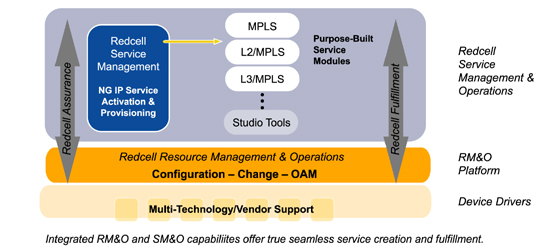 Service Management & Operations
Service Management & Operations
Suite of service creation, provisioning and activation products to quickly add revenue-generating services
Service Providers are constantly looking for ways to speed delivery to market without compromising quality. Automation is the only way to effectively accomplish this task. Manual solutions and CLI are labor intensive and error prone which results in lost revenue and customer dissatisfaction.
A single system to automate repeatable processes not only makes the fulfillment process significantly quicker but also eliminates costly errors. But it can't stop there. Once services are deployed, customers frequently need to change their service. For example a customer may require more bandwidth, or a different configuration. Redcell allows service providers to react quickly and efficiently to these customer needs. The result is delivering services to the end user faster, and with higher level of quality.
Redcell lets providers deploy and manage their MPLS network or IP service regardless of vendor or device type. Redcell comes out-of-the-box ready to support a wide range of equipment, and with integrated tools, it's easy to customize support for a wider range of vendors and devices. Redcell is also flexible enough to handle any next generation service that will come along, or integrate with other OSS/BSS systems. Redcell extends beyond the edge to provision services out to the CPE equipment providing an entire end-to-end solution... with one system!
Customizable & Off-the-Shelf
Redcell is the most versatile and fully-featured Customizable Off-the-Shelf solution available on the market for integrated multi-vendor flow-through provisioning and service assurance.

To be competitive, Service Providers must use their resources effectively and efficiently while quickly delivering converging services. Providers that keep up with the demand to deliver new services – IPTV, data, VoIP, Wireless – at the highest level of quality will emerge as leaders.
Redcell’s integrated products let service providers move from cumbersome, time-consuming provisioning, to quick, efficient, and automated service-aware delivery. Redcell offers a single end-to-end solution to configure, manage, and troubleshoot converging services and networks.
